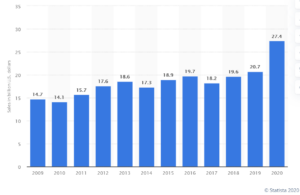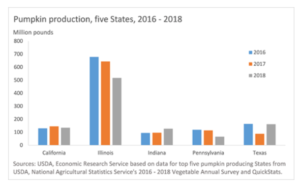A collection of unusual food items
I like posting collections of items on Thursdays. Here are some fun ones.
- Desserts for dogs: Ice cream company Ben & Jerry’s is unveiling two new flavors designed exclusively for canines. Doggie Desserts by Ben & Jerry’s are frozen treats specifically formulated for dogs with a sunflower butter base. The two variants are peanut butter & pretzel swirls in Pontch’s Mix and pumpkin and mini cookies in Rosie’s Batch. [As if overweight in dogs was not their number one health problem]
- Announcing a new dog food made from crickets-–“Jiminy’s.” [Thanks to Turn Texas Blue (@FerociousBeast) for this one]
- EFSA says mealworms safe for human consumption: ‘An important milestone towards commercialisation’: The European Food Safety Authority has published its first scientific opinion on an insect-derived food. The conclusion? Mealworms are safe for human consumption…. Read more. The EFSA ruling is here. [I am so relieved].
- Fried chicken alternative developed from peanut protein: ‘Five years from now, we want to market every part of the chicken’: Haofood says it is the ‘world’s first’ plant-based chicken company to tap peanut protein as its primary ingredient…. Read more
- Delicacy and energy: Okinawa sea cucumber bar producer unveils domestic and international expansion plans: Okinawa brand MGH is seeking to retail its sea cucumber energy bar into supermarkets and convenience stores in Japan, as well as exploring export opportunities… Read
- Blind tasting 3D printed alternative meat: ‘It tastes and feels like meat’: Israeli start-up Redefine Meat has pulled off the ‘world’s largest’ blind taste test for its 3D printed meat alternative. The taste test targeted meat-eaters and the results are in. The company secured over a 90% acceptance rate…. Read more
- Hershey reveals winning name for new candy bar: Hershey’s first extension of the Whatchamacallit candy bar line in 10 years will hit stores in February now that a winning name has emerged from a consumer contest: Whozeewhatzit. The new bar features rice crisps, a peanut butter creme layer and chocolate candy coating.
Food anyone? Enjoy!



 Valentine’s Day is big business. Here are some items:
Valentine’s Day is big business. Here are some items:




